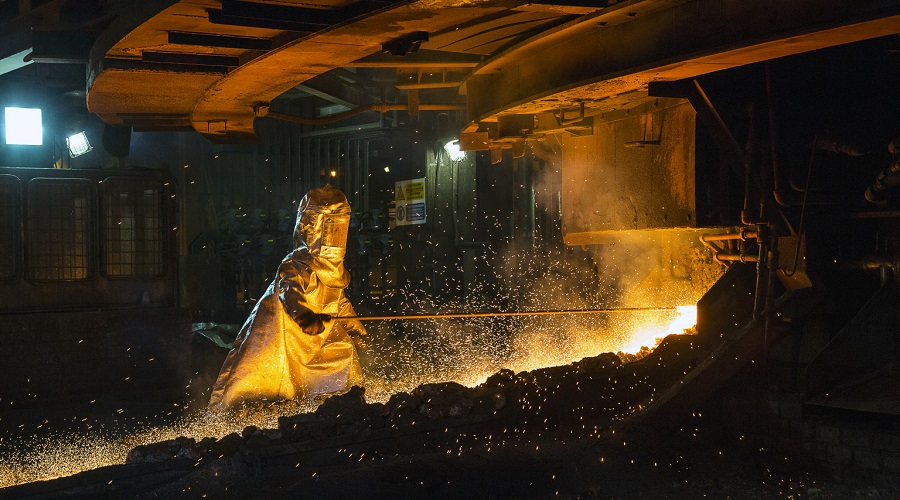MINING IS UNSUSTAINABLE
Nickel: the mined commodity most exposed to biodiversity risks — reportValentina Ruiz Leotaud | October 7, 2021 |

Nickel smelter in Sorowako, Indonesia. (Image by Marcelo Coelho, courtesy of Vale).
Nickel is the mined commodity most exposed to biodiversity risks, a recent report by Verisk Maplecroft shows.

According to the consultancy firm, the battery metal’s exposure to such risks is mainly due to the fact that some of the largest nickel operations on the planet are located in biodiverse areas such as Indonesia, New Caledonia and the Philippines.
“Our data show Indonesia has the highest risk of all major producers. The country is the world’s largest producer of nickel ore and home to one of the world’s biggest copper-gold mines,” the report reads. “Meanwhile, Brazil — another high-risk nation — is the world’s second-largest producer of iron ore. Along with Papua New Guinea, these countries are all rich in globally important biodiversity, but safeguards for those valuable species and ecosystems are under threat.”
The review also points out that Zambia, Mexico, the Democratic Republic of Congo and Ghana fall in the middle in terms of risk because each boasts significant biodiversity that will need to be protected if mining operations in those countries continue to expand.
“OPERATORS NEED TO WORK OUT A WAY OF MEASURING BIODIVERSITY RISK ACROSS THEIR PORTFOLIOS AND CALCULATE THEIR EXPOSURE TO THE THREATS OF NATURAL CAPITAL DEPLETION IN A WAY THAT SATISFIES INVESTORS”Verisk Maplecroft
On the other side of the spectrum are — at least for now — well-established major producers such as Australia, Chile, the US, China and South Africa, where the risk is far lower due to mining taking place in areas with lower value biodiversity and greater protections for nature.
“However, as these markets develop, in part due to skyrocketing global demand for battery materials like nickel, we can expect biodiversity risk to increase in tandem,” the report reads.
Looking at the other commodities, Verisk Maplecroft puts the spotlight on thermal coal and notes that large-scale production of the fossil fuel in Indonesian Borneo accounts for the bulk of its extreme risks score.
Risks for copper, on the other hand, are spread across multiple geographies including Indonesia’s Papua Province, Panama, Brazil, Botswana and Turkey. Iron ore’s biodiversity risk is primarily a result of mines in Brazil.
On a positive note, the UK-based analyst highlights the fact that most of the commodities scrutinized, well over half of the production is located in low-risk areas for biodiversity.
How to deal with biodiversity risks
In Verisk Maplecroft’s view, given the growing demand for nickel and other battery metals, operators will need to get ahead of investor and regulatory demands.
“A first step is to recognize that biodiversity risk is no longer a local matter, but part of a global trend that is making waves among a much wider audience. Operators need to work out a way of measuring biodiversity risk across their portfolios and calculate their exposure to the threats of natural capital depletion in a way that satisfies investors,” the dossier reads. “By participating in the Taskforce for Nature-related Financial Disclosures, known as the TNFD, they can help shape what the global disclosure benchmark will look like.”
The TNFD is an initiative launched in 2020 by four nonprofit organizations: Global Canopy, UNDP, UNEP FI, and WWF, to work with investors to develop a framework for measuring the risks, impacts, and benefits of economic activities related to biodiversity. The project is financed by governments, the UN and philanthropic foundations and, at present, hosts 75 organizations from the private and public sectors, including heavyweight financial institutions such as Citi and Credit Suisse.
Besides joining such a platform, Verisk Maplecroft suggests that operators need to factor the results of portfolio risk analysis into investment and strategic decisions, just as they have with climate-related risks. Doing so is considered a helpful way to mitigate the investment and regulatory dangers of operating in high biodiversity areas and potentially identify opportunities to enhance resilience, business models and social licence to operate.
“Companies are now being asked to measure and mitigate activities damaging ecosystems, but will soon be required to dedicate time and resources to show how much corporate operations and strategies rely on elements like clean water or natural materials used for building – often defined as natural capital services,” the review reads.
No comments:
Post a Comment